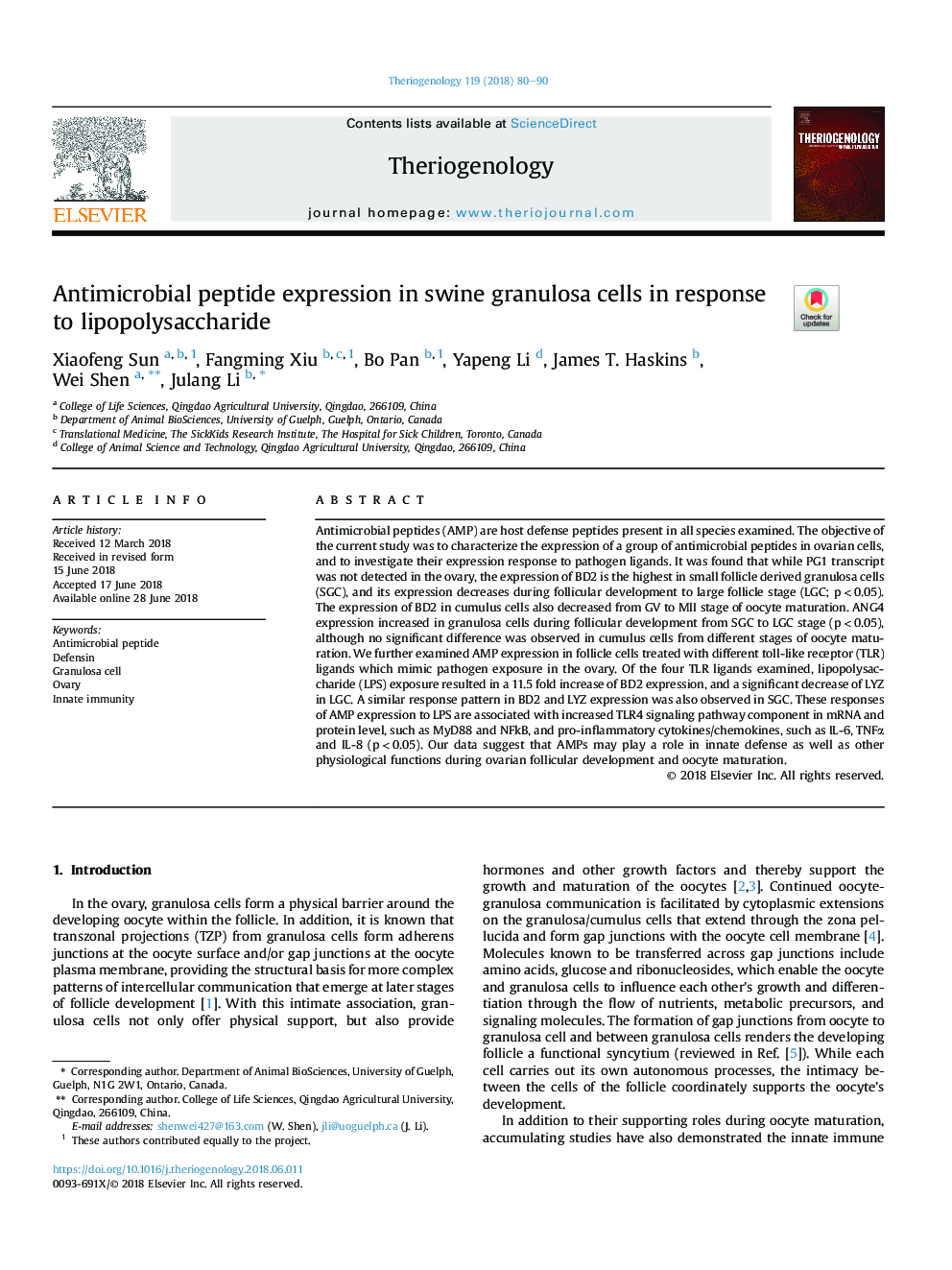| Article ID | Journal | Published Year | Pages | File Type |
|---|---|---|---|---|
| 8426167 | Theriogenology | 2018 | 11 Pages |
Abstract
Antimicrobial peptides (AMP) are host defense peptides present in all species examined. The objective of the current study was to characterize the expression of a group of antimicrobial peptides in ovarian cells, and to investigate their expression response to pathogen ligands. It was found that while PG1 transcript was not detected in the ovary, the expression of BD2 is the highest in small follicle derived granulosa cells (SGC), and its expression decreases during follicular development to large follicle stage (LGC; pâ¯<â¯0.05). The expression of BD2 in cumulus cells also decreased from GV to MII stage of oocyte maturation. ANG4 expression increased in granulosa cells during follicular development from SGC to LGC stage (pâ¯<â¯0.05), although no significant difference was observed in cumulus cells from different stages of oocyte maturation. We further examined AMP expression in follicle cells treated with different toll-like receptor (TLR) ligands which mimic pathogen exposure in the ovary. Of the four TLR ligands examined, lipopolysaccharide (LPS) exposure resulted in a 11.5 fold increase of BD2 expression, and a significant decrease of LYZ in LGC. A similar response pattern in BD2 and LYZ expression was also observed in SGC. These responses of AMP expression to LPS are associated with increased TLR4 signaling pathway component in mRNA and protein level, such as MyD88 and NFkB, and pro-inflammatory cytokines/chemokines, such as IL-6, TNFα and IL-8 (pâ¯<â¯0.05). Our data suggest that AMPs may play a role in innate defense as well as other physiological functions during ovarian follicular development and oocyte maturation.
Related Topics
Life Sciences
Agricultural and Biological Sciences
Animal Science and Zoology
Authors
Xiaofeng Sun, Fangming Xiu, Bo Pan, Yapeng Li, James T. Haskins, Wei Shen, Julang Li,
